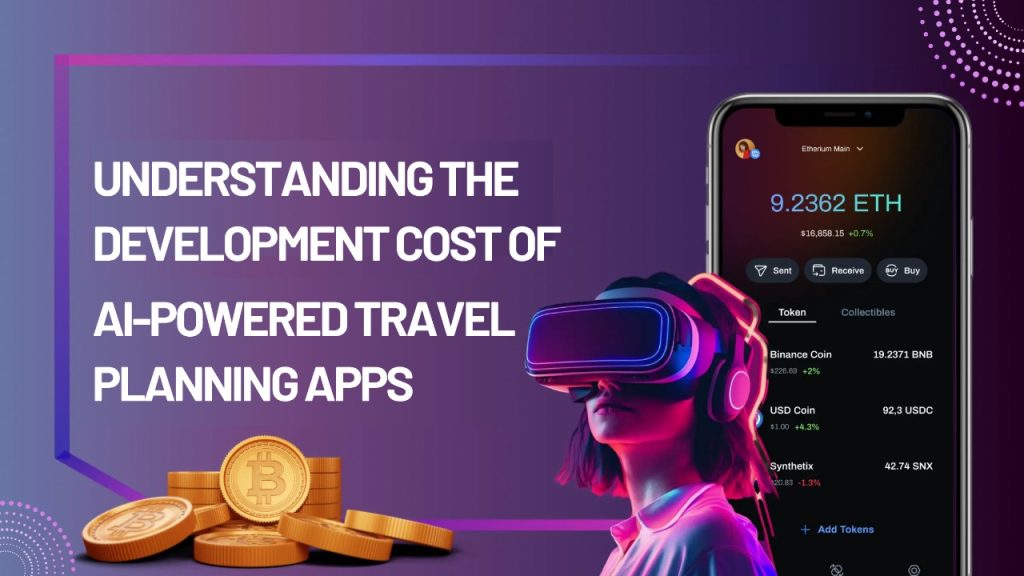Travel planning can often feel overwhelming, with endless options and decisions to make. Enter AI-powered travel planning apps, your new best friend in navigating the world of travel. These innovative tools harness the power of artificial intelligence to streamline the booking process, personalize recommendations, and enhance user experience like never before.
Imagine having a virtual travel assistant that understands your preferences—suggesting destinations based on your interests or finding you the best flight deals at lightning speed. The rise of these intelligent applications has transformed how we plan our adventures, making it easier than ever to explore new places.
But what exactly goes into creating an AI-powered travel planning app? As demand for these high-tech solutions grows, so does curiosity about their development costs. Let’s dive deep into this fascinating realm where technology meets wanderlust!
Benefits of Using AI for Travel Planning
AI technology transforms travel planning into a seamless experience. With personalized recommendations, it tailors suggestions based on user preferences and past behavior.
Time-saving is another standout benefit. AI algorithms quickly sift through vast amounts of data, presenting users with optimal itineraries in moments. This efficiency eliminates the tedious back-and-forth often associated with traditional planning methods.
Travelers can also enjoy enhanced decision-making support. AI analyzes factors like budget constraints, local events, and even weather forecasts to provide insights that help travelers make informed choices.
Moreover, the 24/7 availability of AI chatbots ensures assistance at any time. Whether it’s answering questions or adjusting plans on-the-go, this convenience enhances overall satisfaction during trips.
These apps often learn from user interactions over time. As they accumulate data about individual preferences and trends within the travel industry, their recommendations become increasingly accurate and relevant for each traveler’s unique journey.
Factors That Affect the Development Cost of AI-Powered Travel Planning Apps
When considering the development cost of AI-Powered Travel Planning Apps, several factors come into play. One major aspect is complexity and features. Basic functionality might keep costs lower, but advanced capabilities like personalized recommendations or real-time updates can significantly increase expenses.
Data sources and integration also impact pricing. Accessing reliable data from various APIs demands investment in partnerships and system compatibility.
User interface and experience are crucial as well. A sleek, intuitive design enhances user engagement but requires skilled designers, pushing up costs.
Maintenance and updates shouldn’t be overlooked. Ongoing support ensures the app runs smoothly over time. Regular enhancements based on user feedback require continuous financial commitment to ensure relevance in a fast-evolving market.
A. Complexity and Features
The complexity and features of AI-powered travel planning apps play a crucial role in determining development costs.
A simple app with basic functionalities will naturally require less investment than one packed with advanced capabilities. Features like personalized itinerary suggestions, real-time updates, or voice recognition significantly increase the technical requirements.
Integrating machine learning algorithms to enhance user interactions adds another layer of complexity. Developers must ensure that the app learns from user behavior and preferences over time, which requires more sophisticated programming.
Moreover, additional features such as multi-language support or integration with third-party services can further escalate expenses. Each added function demands meticulous design work and thorough testing to provide a seamless experience for users.
Striking the right balance between functionality and budget is essential for creating an effective AI-powered travel planning app.
B. Data Sources and Integration
When developing AI-powered travel planning apps, data sources play a crucial role. Quality and diversity of data directly impact the app’s effectiveness. The more robust the dataset, the smarter the recommendations.
Integration is another key element. Travel planners must seamlessly connect to various APIs that provide real-time information on flights, accommodations, weather updates, and local attractions. This integration allows users to receive tailored suggestions based on their preferences.
Moreover, incorporating user-generated content enhances personalization. Reviews and ratings from fellow travelers can guide users in making informed decisions.
The complexity of these integrations influences development costs significantly. Developers need expertise in handling multiple data streams while ensuring everything functions smoothly within one platform. A well-integrated system not only enriches user experience but also optimizes operational efficiency for businesses involved in travel services.
C. User Interface and Experience
User interface (UI) and user experience (UX) play pivotal roles in the success of AI-powered travel planning apps. A seamless UI is essential for attracting users and keeping them engaged.
Intuitive navigation ensures that even first-time users can effortlessly explore features. The layout should be clean, making information easy to digest at a glance. Engaging visuals enhance the overall appeal, drawing users into their travel plans.
Equally important is UX design, which focuses on how users interact with the app. An enjoyable experience leads to higher retention rates. Features like personalized recommendations powered by AI create a unique journey tailored to individual preferences.
Feedback mechanisms are also key; they allow users to share their thoughts, thus improving future iterations of the app. Investing in robust UI/UX design enhances user satisfaction and encourages word-of-mouth promotion among travelers seeking innovative solutions.
D. Maintenance and Updates
Maintenance and updates are crucial for AI-powered travel planning apps. They ensure that the app runs smoothly and remains relevant in a rapidly evolving market.
Regular maintenance involves fixing bugs, enhancing performance, and ensuring compatibility with new devices or operating systems. Users expect seamless experiences; any glitch can lead to frustration.
Updates go beyond just fixes. They provide opportunities to introduce new features based on user feedback or changing trends in travel preferences. Keeping content fresh is vital for engaging users long-term.
Moreover, integrating real-time data sources requires constant attention. Travel information changes frequently—flight schedules shift, hotel rates fluctuate, and attractions may close temporarily. Staying current keeps your app competitive.
Investing in a solid maintenance plan might raise initial costs but pays off by improving user satisfaction and retention rates over time. A well-maintained app builds trust among its users while fostering a loyal community.
Tips for Reducing Development Costs
To manage costs effectively, start with a clear project scope. Define essential features and avoid unnecessary complexities from the get-go.
Embrace agile development methodologies. This approach allows for iterative progress, reducing wasted resources by focusing on user feedback throughout each stage.
Utilize existing APIs and third-party services whenever possible. Leveraging these tools can significantly cut down the time and effort needed to develop core functionalities.
Consider outsourcing specific tasks to skilled freelancers or agencies in regions with lower labor costs. This strategy can provide quality work at a fraction of the price.
Prioritize building a minimum viable product (MVP). An MVP focuses on core functions that meet user needs while allowing you to test market demand before committing further resources.
Conclusion
As the travel industry increasingly embraces technology, AI-powered travel planning apps stand out as a game changer. They offer convenience and personalization that enhance the user experience significantly. However, understanding the development costs of these innovative applications is essential for businesses looking to enter this competitive market.
Numerous factors influence the cost of developing such an app. The complexity of features you want to incorporate plays a significant role, while data sources and integration methods can add additional expenses. User interface design affects both usability and overall satisfaction, making it crucial not to overlook its importance in your budget planning. Maintenance and updates are ongoing costs that must be factored into your long-term financial strategy.
A case study comparing popular AI-powered travel planning apps reveals insights into their varying developmental investments. Such comparisons help new developers gauge expectations based on existing solutions in the marketplace.
If you’re aiming to mitigate development costs without sacrificing quality, consider strategies like starting with core functionalities and expanding later or leveraging third-party APIs instead of building from scratch.
Investing wisely in AI-powered travel planning apps can yield fruitful returns when executed strategically. Understanding all aspects involved will guide you toward creating an effective tool tailored for today’s travelers’ ever-evolving needs.

